
They Are Machines: Research, Unpacked
THEY ARE MACHINES: Research, Unpacked is book one of a researched-based project that catalogues and maps the influences in a personal graphic design genealogy; a considered but loosely curated collection of artifacts representative of critical social and cultural imprints.
This autobiographical process unpacks a lifetime of collected forms and ideas, ‘mechanisms’ of cultural influence which have become the ‘parts’ of my master persona. An analysis of the collection concludes ‘they are machines’, a soft-shaped ideology of which two parallel fascinations begin to emerge. The well-established theory that, (A) humans are becoming post human, having a greater synthesized relationship with technology and vice versa, lending to a metaphorical equivalent that (B) graphic design is forging its own synthesis with architecture, that is to say it is becoming the body of the building rather than its mere prosthetic.
The latter of these two ideas is more concretely explored in book two of the study, IT IS A BUILDING: Process & The Pain of Progress

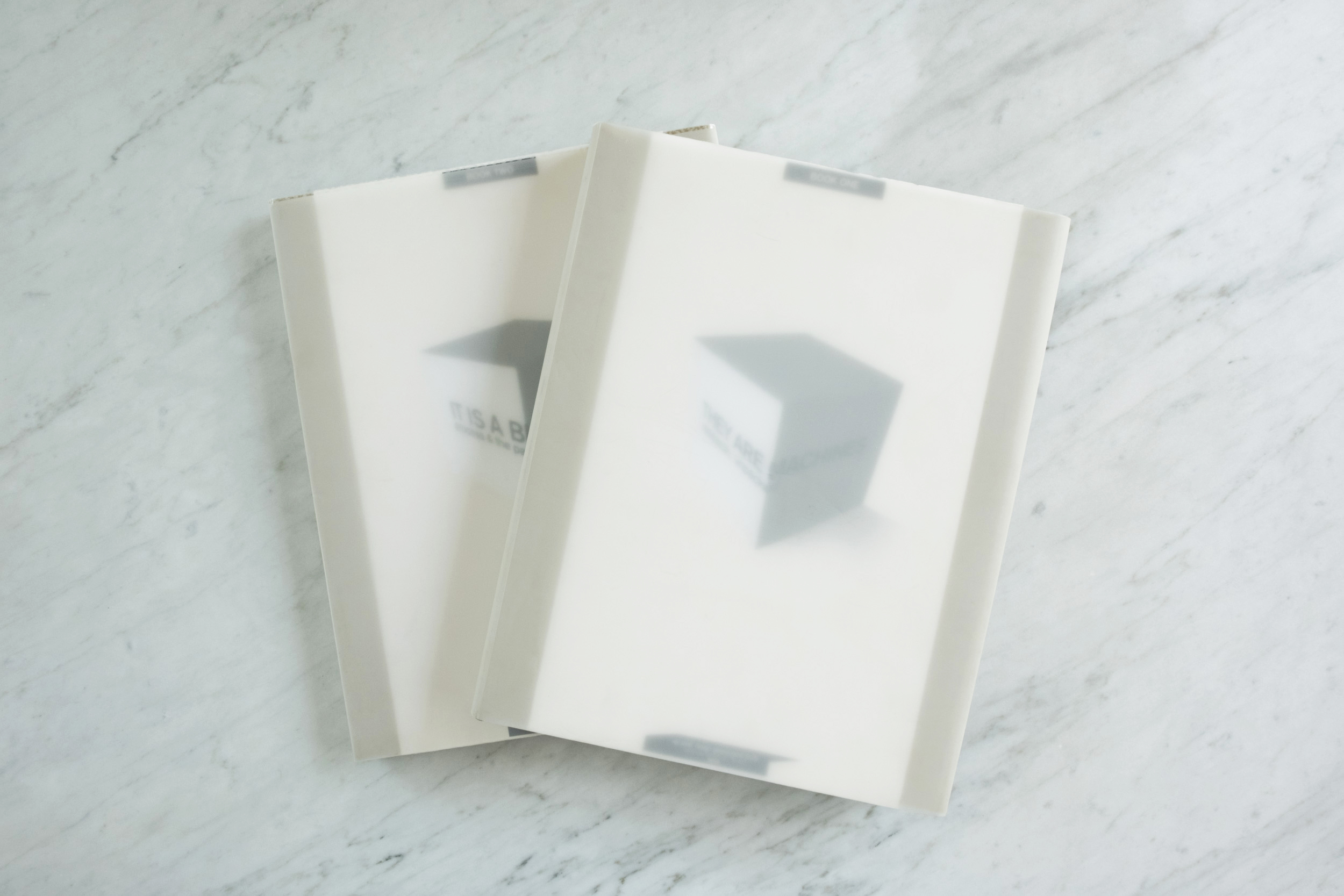



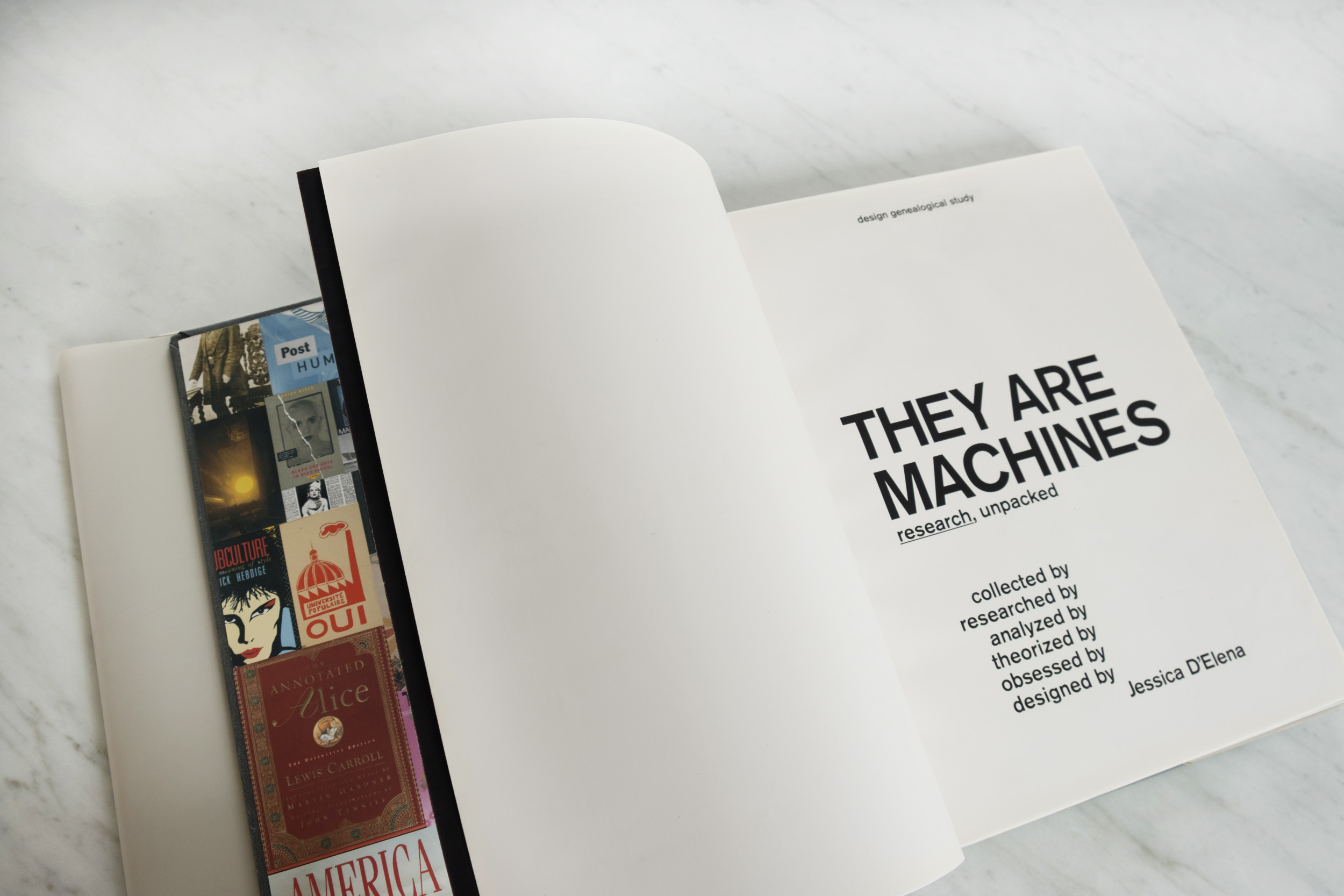



Through previous work, I saw a vague relationship with architecture, a conceptual crush, emerging although the specificity of this kinship was limping and cloudy. But in a book about influences, instinctually I knew that this object in particular had to behave architecturally, expressed in a physical capacity. The design engineering of the book had to echo the physical gesture of an architectural body.



The book creates situations designed to physically manifest the connection between an influence and its conceptual intent. Exploring the book thus becomes interactive so that a reader can “experience” the common qualities that a book inherently shares with architecture. Primarily, that they are both time-based mediums is impressed on the audience.

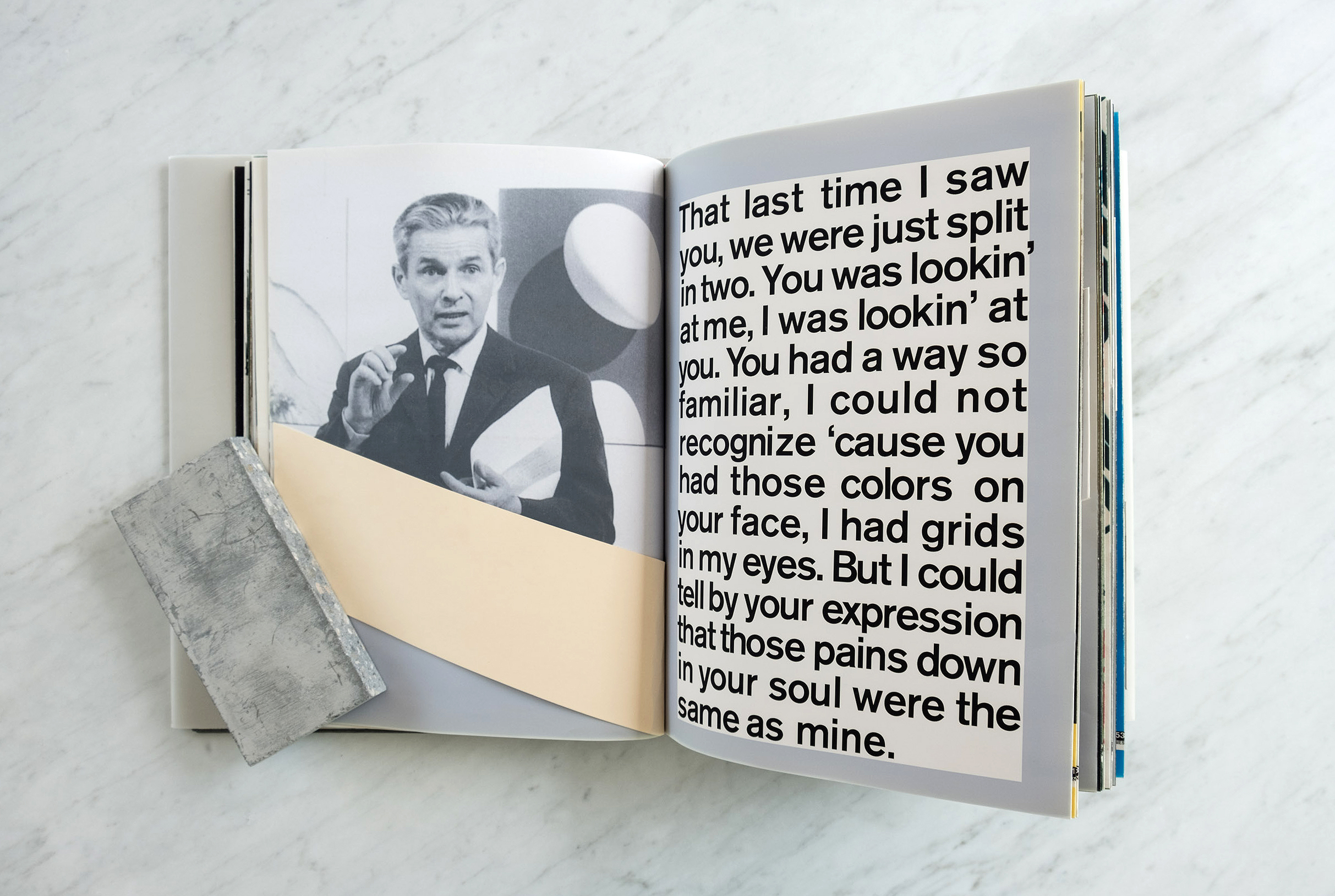

Divergent artifacts (here, the stylistically distant Modernist Josef Müller-Brockmann and Japanese avant-gardist Tadanori Yokoo) converge to reveal how and why they could belong to the same ideological framework. New meanings arise from cultural collisions, and a nod to Post-modernism is subtly implied.









Previously exclusive objects of influence begin an inclusive dialog with one another, literally commenting on others' point of view and authors even begin to cross comment on their own material.
For example, the introduction of the McLuhan phrase, “All media are extensions of some human faculty, psychic or physical” from the previous spread, now read, “All media are an extension of the eye.”
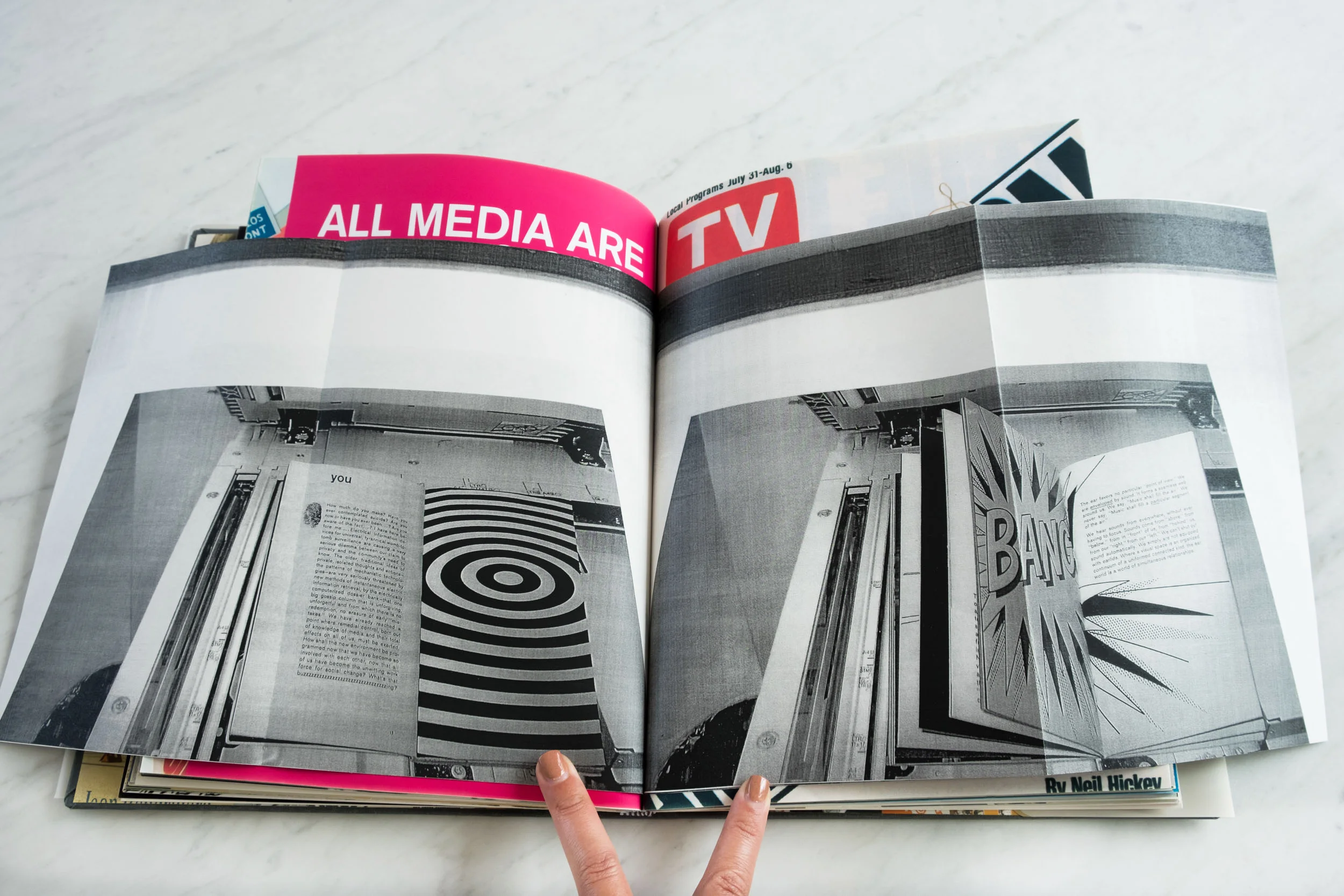




Theory and Movements examined those criticalities I found most significant. The age of the manufactured image, information and technology had produced a spectrum of effects on the representation of human body and on our understanding of ourselves and what it means to be human.

Strategic juxtapositions deal with additive and subtractive surgery of parts, parts of body and image, consequently the selective revelation and masking of certain parts discusses artifice and surface, mutation and prosthesis, the synthetic mechanisms operating below the surface of the “real”.


There are those forces that have no neat place in the collection, viral entities that hover above the confines of the categorical plane.

None the less, their close physical relationship within the context of the book yield staged synergies loaded with curious nuance.

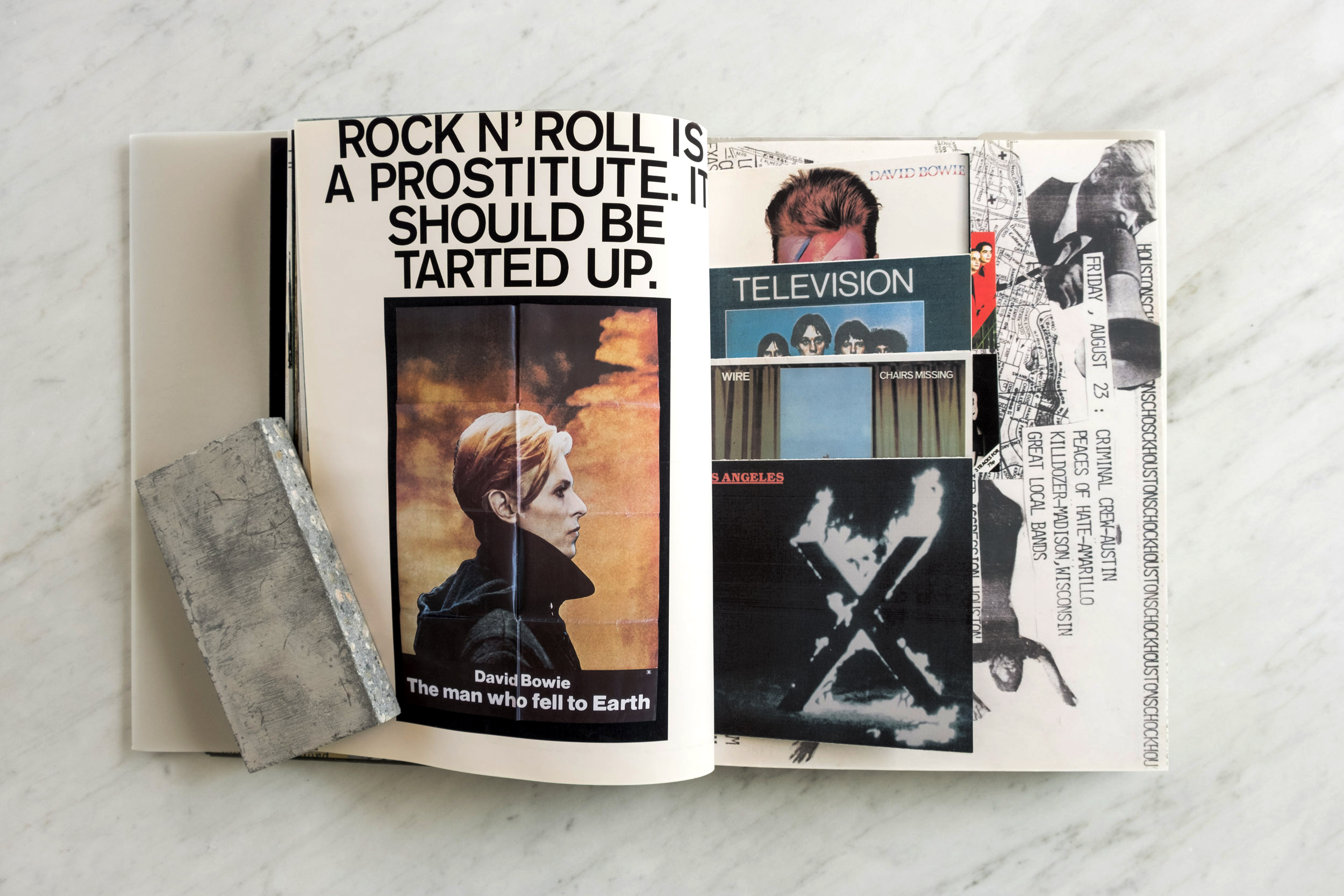
The physical properties associated with each influence are not suppressed but exploited. Why illustrate a media format, when you can insert the format itself? Acknowledging the physical qualities of each artifact imparts upon the reader enables a recollection, the senses are imbued with the familiar relationship we have with these tangible objects.

A spotlight on Now Graphic Design concludes the archeological dig, purposely employing “now” in lieu of “contemporary” which, while broadly implying current, its non-specificity can suggest the last 20 years as “modern” or new. “Now”, limits the criteria for design produced that instant inescapable, less about precedence, adamantly focused on simultaneous design occurrences and to which I hold myself accountable by asking, Now, "what exactly are you getting at?"





Hopefully, reaching the catalog's end endears the reader to the double entendre of its title. “They are Machines” hints that these select influences are “mechanisms” and “parts” of a singular creative persona. The looking glass also reveals a recurring, shared theme among them ― expression of the post human phenomenon ― humanity’s accelerating trajectory toward a more advanced and artificial iteration of itself, a greater synthesized relationship with its technology and vice versa, literally suggests They ARE Machines.
But this conclusion splits again like an embryonic cell dividing a set of twins, two individuals sharing an almost identical biological code. While “They are Machines” spells out the thematic integration of the human body and technology, it also gave birth to a second yet equally important framework, that Graphic Design can and is experiencing an accelerated integration with architecture, that architecture is a body and graphic design is a software applied to it, designed to make the system out perform older models, a kind of "Post Design".
This twin design vision is further developed in the follow-up book It is a Building: Process and the Pain of Progress.